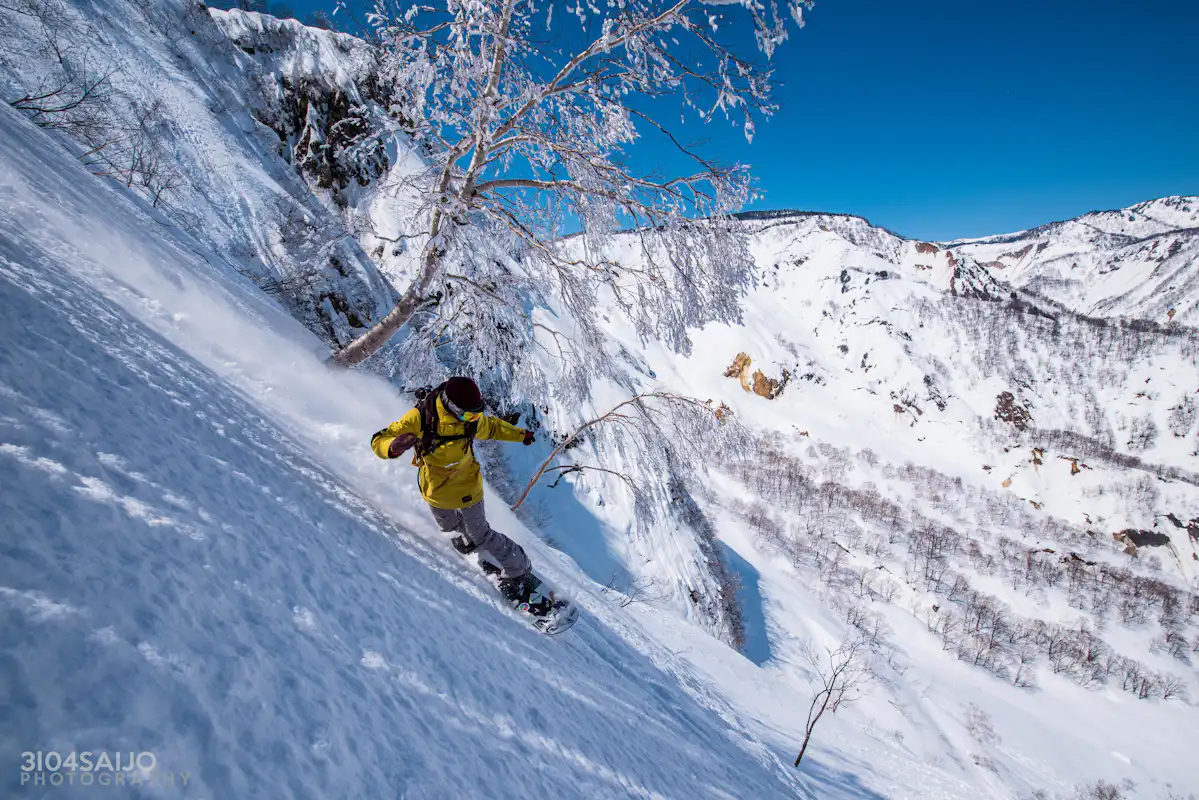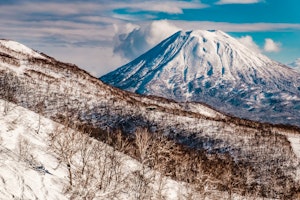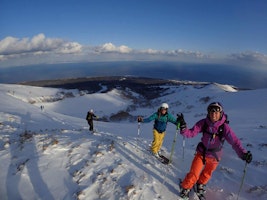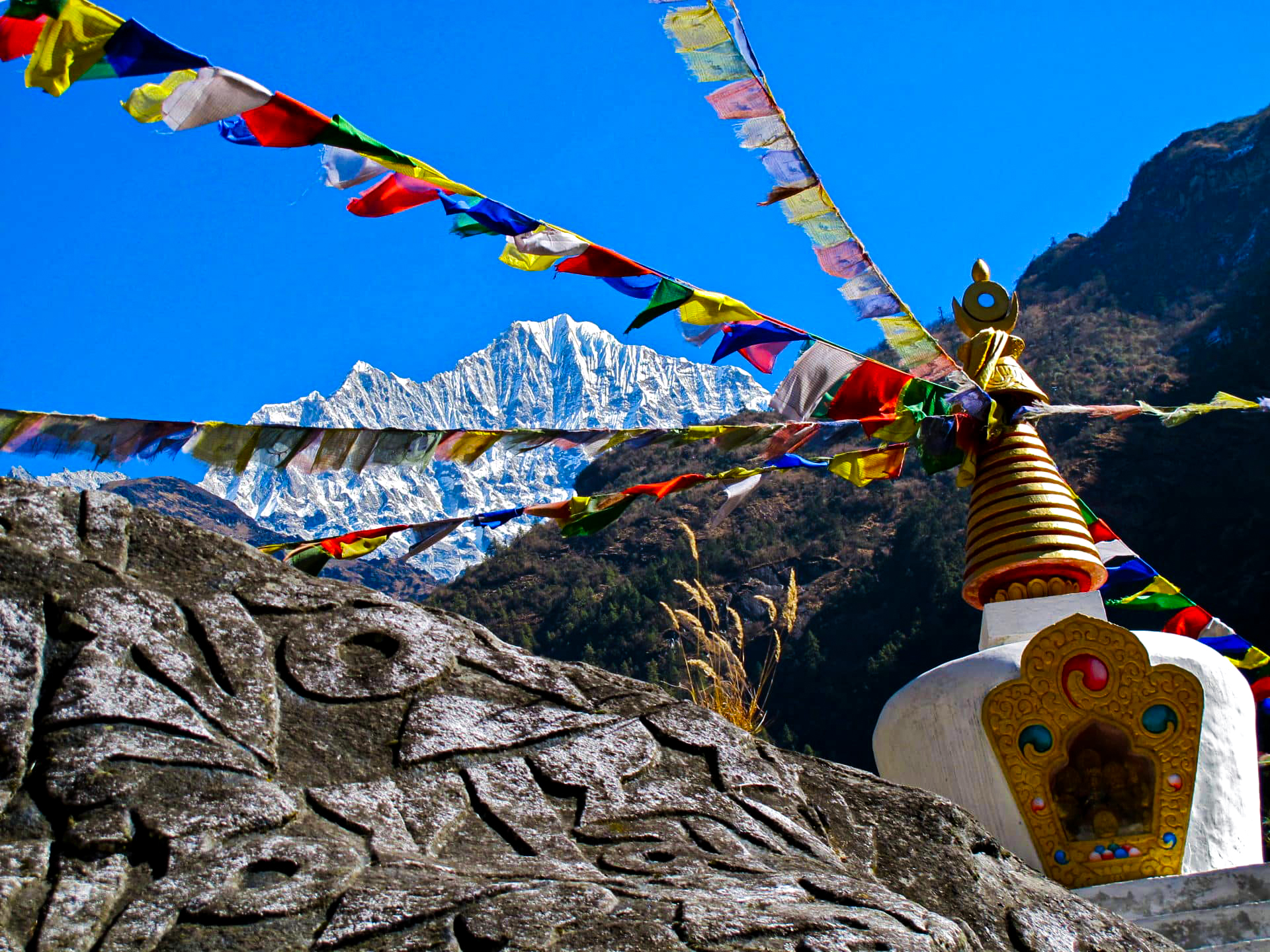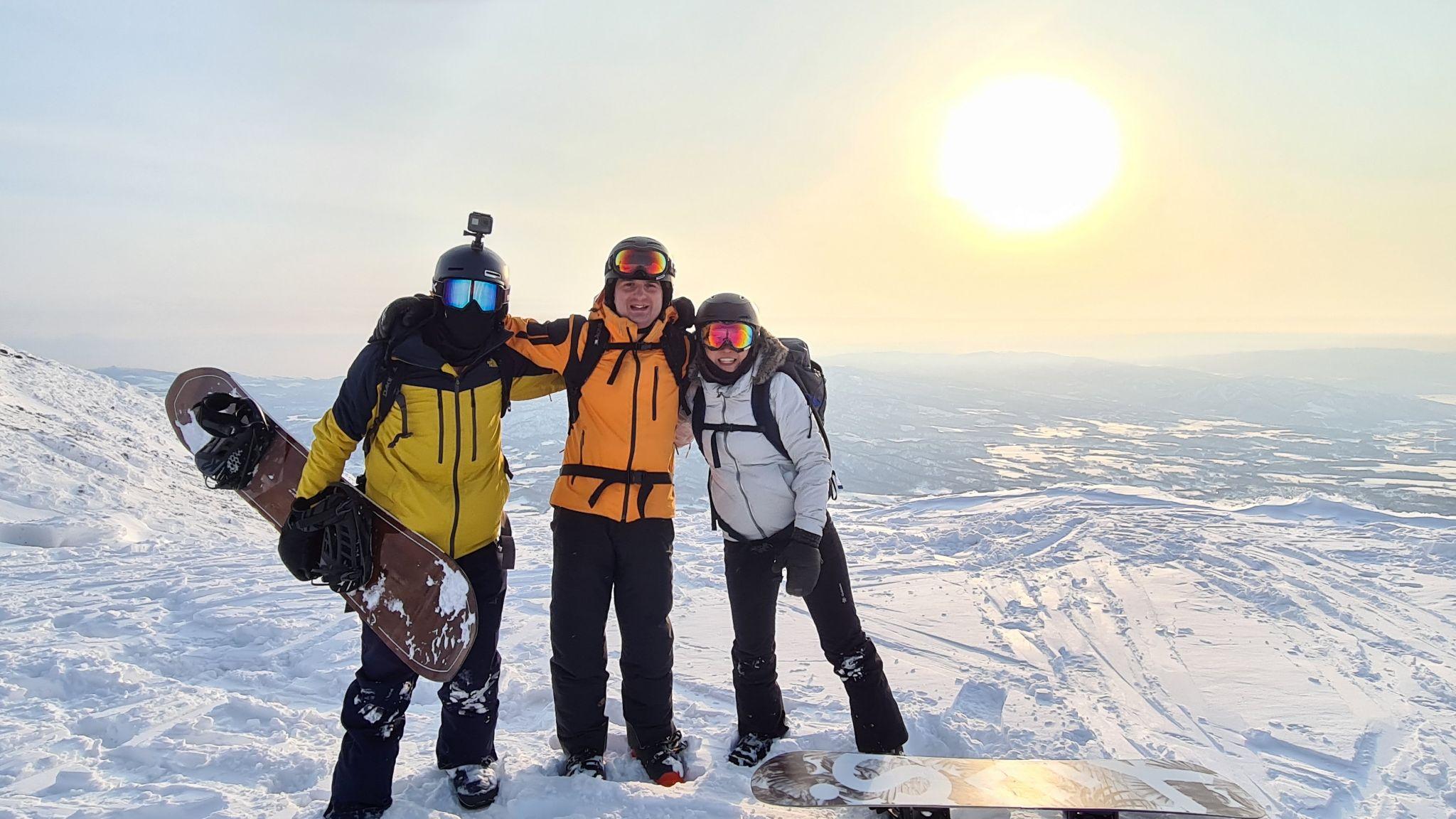Japan is one of the best freeride skiing destinations in the world. Its combination of dry and very light powder, legendary amount of snowfall, hundreds of ski resorts and a fascinating culture & cuisine, makes it a magnet for those seeking a top-notch ski experience.
This winter season, the Japanese ski resort of Hakuba is hosting one of the competitions of the Freeride World Tour (FWT), a series of events where the world's top snowboarders & skiers put their superb skills to the test.
Thanks to a partnership with Explore-Share, it is now possible for amateur skiers to ride the slopes of Japan’s finest ski resorts in the company of a professional freeride athlete!
This winter, go for something different: check out all the ski sessions available at Explore-Share with Freeride World Tour athletes in Japan!
Yoichi Goto works for the Freeride World Tour and is behind this project that allows people to experience the joy of freeriding while riding with athletes:
‘The FWT skiers and snowboarders ride their home Japanese resorts tens of thousands of times, thus are the specialists of how to enjoy them. They know which resorts in the area you should go according to the weather, secret lines, trees and features, and probably the restaurants to go after the riding too!’.
 Skiing in Hokkaido
Skiing in Hokkaido
Wakana Hama, a Japanese snowboarder & freeriding pro athlete — currently the FWT top female snowboarder in Japan and 5th in the world ranking**—** offers group & private freeride sessions in Hakuba and in several spots in Hokkaido. For her,
‘This is a fantastic opportunity where, through interactions and riding together with a freeriding athlete, you can learn about the athlete’s invaluable stories and experiences, whilst allowing you to explore the Japanese ski resorts safely and easily’.
With over 500 ski resorts scattered between the northern island of Hokkaido and the Japan Alps (in Honshu), deciding where to go freeride skiing in Japan may sound like a hard thing to do.
To shed some light on this topic, we asked Wakana to list her favorite ski resorts in her home country and came up with a guide to help you plan your next freeride skiing destination in the land of powder snow!
1| Niseko (Hokkaido)
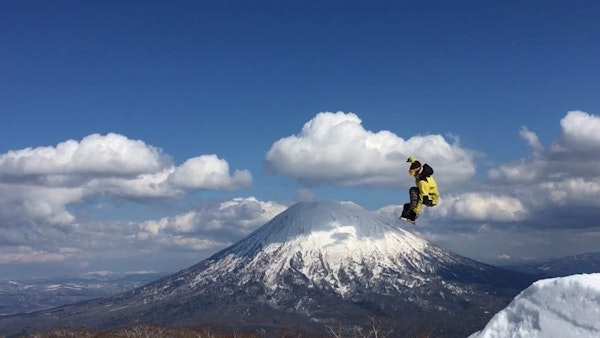 Skiing in Hokkaido
Skiing in Hokkaido
Lying in the island of Hokkaido, 100 km from Sapporo, Niseko is undoubtedly one of the most famous ski resorts in Japan. Long runs, endless powder and easy access to different resorts, have turned it into a big favorite among international travelers, so it’s no wonder that English is so widely spoken there!
With the beautiful and iconic Mount Yotei dominating the landscape, Niseko is also one of the few resorts with access to a large controlled off-piste area.
‘The snow quality and quantity in Niseko are the best’, says Wakana_._ Of all the resorts which comprise this ski area, she picks two as her favorites for freeriding:
Niseko Grand Girafu: ‘this is where I grew up as a snowboarder. There are a lot of places where one can have fun jumping off using the natural shape of the terrain’, says Wakana. Also, she mentions this as one of the best places to get started in freeride skiing & snowboarding.
Niseko Moiwa: this lesser known resort to the west of Annupuri is the place to go if you want to avoid crowds. ‘While it’s small, you will find a lot of spots to play in powder snow here’, she says.
In brief
Where is it: Shiribeshi Subprefecture, Hokkaido.
How to Get There: Niseko is located at a 2h drive from the New Chitose Airport, the largest airport in Hokkaido. There are taxis and bus services available. You can also get to Niseko by bus from Sapporo (trip length is between 2.5 and 4 hours).
Season: Late November to early May. Like most places in Hokkaido, Niseko is one of the best choices for skiing in the early season.
Top 5 Reasons to Go: 1| Lots of powder! 2| Amazing views of Mt Yotei 3| Huge amounts of snowfalls 4| Extraordinary night skiing 5| English-friendly atmosphere
Go freeride skiing with a FWT athlete in Niseko!
2| Hakuba (Honshu)
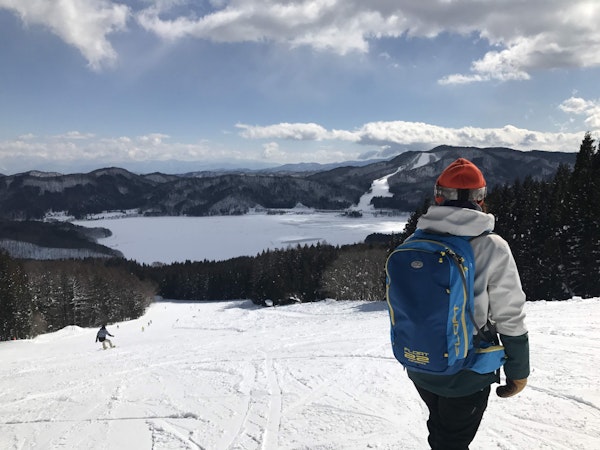 Skiing in Hakuba
Skiing in Hakuba
Located at only 4 hours from Tokyo and 1 hour from Nagano, at the heart of the stunning North Japan Alps, Hakuba combines amazing ski terrain with a more authentic Japanese experience.
Known for hosting the 1998 Nagano Winter Olympic Games, the Hakuba Valley is home to 11 ski resorts and some of the steepest runs in Japan. The area receives a huge amount of snowfall during the winter season (not as much as Niseko, but there’s still plenty of powder snow!), allowing a superb experience for skiers of all levels. Besides, there’s a great variety of accommodation options, as well as restaurants, bars and shops in all the resorts, specially in Hakuba Village.
For Wakana, these are the best resorts for freeriding in Hakuba:
Happo One: ‘The snow quality and quantity is good. There’s an easy access to backcountry skiing and some steeper slopes’, she says. This is the most popular resort in Hakuba and the one which has the largest ski area. _‘_For those seeking challenging or more extreme runs, the backcountry skiing area which one can easily access from Happy One offers a lot of challenging and stimulating opportunities’, she adds. Seasoned freeriders, this is the place to go!
Hakuba 47 & Goryu: ‘There is powder snow to explore but it’s also possible to have fun in the terrain park. It’s easy to access the backcountry from here as well’, says Wakana. This combination of two resorts provides adventures to cater all types of skiers. Beginners will find the best options at the base of Goryu, while runs for intermediate skiers are can be found at the top. Hakuba 47, on the other hand, provides great slopes for intermediate and expert skiers.
In brief
Area: Nagano Prefecture, Honshu.
How to Get There: the fastest way to get to Hakuba from Tokyo is taking the bullet train (Shinkansen) to Nagano and then a bus to Hakuba (estimated time: 3 hours). Other options are: express train from Shinjuku to Hakuba (4 hours), bus (5 hours), taxi or rented car (4.5h). From Nagano, you can take a bus to Hakuba (1h).
Top Reasons to Go: 1| Easy access from Tokyo 2| Steepest runs in Japan 3| Amazing deep powder and backcountry terrain 4| Slopes for all ski levels 5| Authentic Japanese experience
Best Time to Go: December to May.
Go freeride skiing with a FWT athlete in Hakuba!
3| Zao Onsen (Honshu)
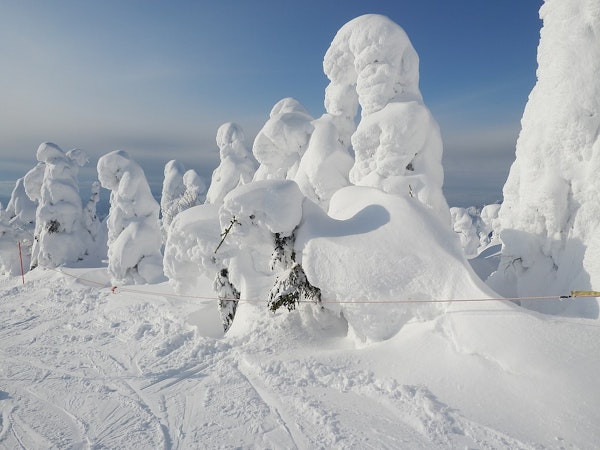 zao onsen
zao onsen
Lying in Yamagata City, in the island of Honshu, Zao Onsen is one of the country’s oldest ski resorts and a traditional Japanese hot spring village. ‘It’s a big area, with good snow quality and quantity’, says Wakana. ‘The juhyo (frost covered trees) are unique to this place and very beautiful’, she adds. Also known as ‘ice trees’ or ‘snow monsters’, these trees make the landscape look surreal and magical. Tree skiing in Mount Zao is a superb and one-of-a-kind experience!
After a long day of freeride skiing or snowboarding, you can relax at one of the thermal bath (onsen) of Zao Hot Springs resort.
Still under-the-radar for foreign tourists, Zao Onsen allows a traditional Japanese experience in a strikingly beautiful and uncrowded terrain.
In brief
Area: Yamagata Prefecture, Honshu.
How to Get There: From Tokyo, you can take the bullet train (Shinkansen) to Yamagata Station (estimated time: almost 3 hours). From Yamagata, you can take a bus to Zao Onsen (45 minutes).
Top Reasons to Go: 1| Tree skiing between surreal frozen trees (Juhyo) 2| Enjoy a traditional Onsen experience 3| 10 km downhill run 4| Perfect for intermediate skiers and snowboarders 5| Amazing off-piste trails with untraveled powder
Best Time to Go: early December to early May (January and February are best for chasing powder).
Life as a Freeriding Athlete: 3 Questions to Pro Snowboarder Wakana Hama
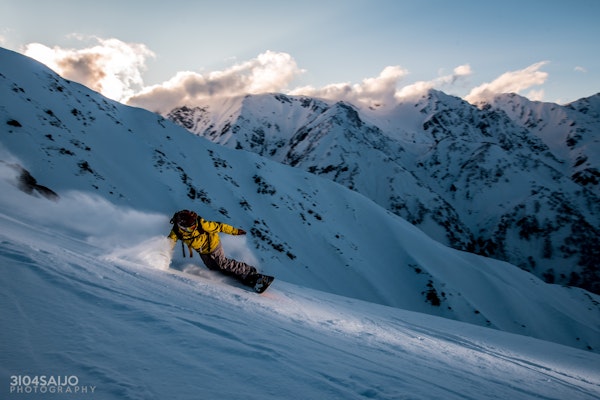 Skiing in Hakuba
Skiing in Hakuba
How did you evolve to become an elite athlete?
'When I was 25 years old (in 2004), I started off as a snowboarding bum. At the time, I was just riding powder and played in the natural terrain day in and day out. I just became good at snowboarding doing that.
I then started snowboard cross (RA: this is a category in official Freestyle Snowboarding – they have this in the Olympics etc.) and noticed that despite I could ride well already, I didn’t have good basic skills, and from around 2012 I started to cut down the time I played in the powder but concentrated on improving my basic riding skills. Fortunately, I met a great coach and my basic skills improved massively.
Having an abundance of experience in riding powder and natural terrains meant that I had an ability to ride in all terrains, and this combined with my improved basic skills, I was able to propel myself in the freeride competition world.
Even now, I never stop training both the basic skills and free run aspects of snowboarding and I see no end to improvements that I could make'.
What are the main skills required for competitive freeriding?
'Good ability to respond —the ability to ride any terrains and snow conditions come what may—. To know your own limits. To have a good spatial awareness. The experience of having played and ridden in diverse terrain types in a lot of different mountains'.
Do you have any tips for beginner snowboarders?
'Regardless of being a beginner or a top level athlete, to "have fun” is the common thing in freeriding. When things don’t go well and you feel upset or angry, please always remind yourself to “have fun”. Things will surely take a turn for the better'.
***
If you are heading to Japan this winter season, skiing with a pro athlete of the Freeride World Tour is a unique chance that you just can't miss!
Read more about the Freeride World Tour partnership with Explore-Share.
